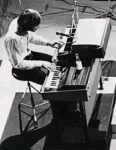Add: Frosty Myers
JOHN ASHBERY
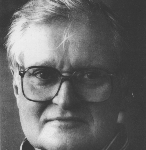
Ashbery is another important literary influence on Carroll, but I don’t know any details. The title of the prose piece “‘The Academy of the Future Is Opening Its Doors . . .,'” in The Book of Nods is a line from Ashbery. Ashbery appears in Disconnected with Carroll and others. Read more about John Ashbery on Wikipedia >
Berkson pops up in Forced Entries in “Invitation to the Dance” (15-20) and “New Accomodations” (37-38). Carroll and Berkson collaborated on “Back Up Front (for Ted Berrigan),” an uncollected poem now housed in the Library of Ted Berrigan. Read more about Bill Berkson on Wikipedia >
Tom Clark wrote the introduction, titled “Rimbaud Rambles On: By Way of a Preface to The Diaries,” for the first edition of The Basketball Diaries. Read more about Tom Clark on Wikipedia >
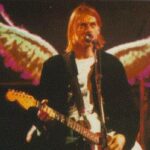
Carroll wrote “8 Fragments for Kurt Cobain” shortly after Cobain killed himself (4 April 1994). Read more about Kurt Cobain on Wikipedia >

In “Hello, Dali,” a humorous piece in Forced Entries (158-61), Carroll tells the story of how Dali stole his cab. Read more about Dali on Wikipedia >
“Invitation to the Dance,” in Forced Entries (15-20), is a brilliant portrait of Denby. Read more about Edwin Denby on Wikipedia >

Carroll admired Dylan, but he was much bigger on Phil Ochs and The Who. Carroll refers to Dylan on occasion in The Basketball Diaries and describes meeting him in “Dylan and the KGB” in Forced Entries (pp.65-70). Also, Bob’s son, Jesse, directed videos for three of Carroll’s spoken-word pieces. These videos, “The Last Bear of Sarajevo,” “Untitled Poem,” and “For Elizabeth,” were shown between sets on the 1993 Lollapalooza tour. Read more about Bob Dylan on Wikipedia >
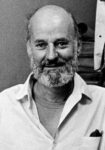
Just a brief quip to add here. On his album Praying Mantis, Carroll, while introducing “Tiny Tortures” from Forced Entries, mentions Ferlinghetti. He hints at the temptations inherent (to a junkie) in his duty of holding the contribution bowl at poetry readings at St. Mark’s, and says, after hearing Ferlinghetti, “I was straight for weeks.” Read more about Lawrence Ferlinghetti on Wikipedia >
JOHN GIORNO

John Giorno ran “Dial-a-Poem,” which started as a project in which writers recorded their works on tape so that people could call up and listen to them on the phone. The original project is now housed at the Museum of Modern Art in Manhattan, New York. It has since evolved into a series of albums (see Spoken Word Collaborations) on the Giorno Poetry Systems Label (The Dial-a- Poem Poets, Disconnected, Life Is a Killer, You’re a Hook, Better an Old Demon Than a New God, etc.) as well as the excellent films Poetry in Motion and Gang of Souls. Carroll did his first Dial-a-Poem recording around 1969. Giorno appears in the films as well as on all of the “Dial-a-Poem” albums, along with Ginsberg, Burroughs, and most of the surviving Beats. Learn more about John Giorno on Wikipedia >

Richard Hell is a punk musician and poet perhaps best known for the influential Richard Hell & the Voidoids. Their 1977 album Blank Generation influenced many other punk bands. Its title track was named “One of the 500 Songs That Shaped Rock.” Hell is immensely important in punk rock and the history of rock music. In the late 1990s Hell and Jim Carroll often appeared together on the spoken-word circuit. Hell was also enlisted to write a review (which I loved and nobody else in charge did) of the posthumously published The Petting Zoo. I am still learning about the connection. Meanwhile, for information about Hell, visit his website at www.richardhell.com and of course you can learn more about Richard Hell on Wikipedia >
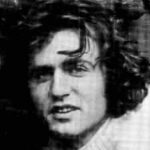
Gerard Malanga, who was Warhol’s chief collaborator on the early silkscreen paintings, is a highly-acclaimed poet, photographer, and filmmaker. Carroll and Malanga worked for Andy Warhol together as co-managers of AWT-BAG (Andy Warhol’s Theater–Boys to Adore Galore). Malanga appears in Forced Entries in “Transfer–Moving Up, Downtown” (38-39). Malanga published a rave review of Carroll’s Living at the Movies in Poetry.
Photos of Carroll appear in Malanga’s book Resistance to Memory Portraits from the Seventies. Learn more about Gerard Malanga on Wikipedia >
RAY MANZAREK
Ray Manzarek is best known as the keyboardist for The Doors.
In the late 1980s he started touring as accompanist for poet Michael McClure and toured along with McClure with Jim Carroll.
I saw Carroll read in San Diego on a double bill in 1988 with Michael McClure and Ray Manzarek opening for him. Carroll was delayed by traffic, so McClure and Manzarek just kept going. That was an amazing experience!
In the 2000s, Manzarek and Carroll toured together. What I remember about this period Is that Carroll — who had a lot of experience in rock & roll and knew about the hierarchy of the main act vs the opening act — would choose to be the opening act because he wanted to get home or do something else. So one thing I find interesting about journalism of that period is how the journalists classify the main act vs the supporting act. For example this article, written after Manzarek’s death, which says Carroll was opening for Manzarek.
The only thing I remember of when Jim Carroll and Ray Manzarek were appearing together at The Bottom Line in Manhattan was . . . I went backstage to see Jim Carroll and LITERALLY climbed over Ray Manzarek to get to Jim Carroll. And I can tell you that Jim Carroll ribbed me endlessly about the Ray Manzarek thing until he died!
Carroll was supposed to do an album with Manzarek a few years ago, but the project fell through.
Learn more about Ray Manzarek on Wikipedia >

McClure is a beat poet, more or less in the same club as Allen Ginsberg and Jack Kerouac. In the late 1980s McClure was on the spoken-word tour circuit along with Jim Carroll. I saw Carroll read in San Diego on a double bill in 1988 with Michael McClure and Ray Manzarek opening for him. Carroll was delayed by traffic, so McClure and Manzarek just kept going. That was an amazing experience! Carroll admired McClure. I had a (rare) brief poet assessment conversation with Carroll and expressed my opinion that I couldn’t stand McClure. Carroll said he thought McClure was great. End of poet assessment conversation, because everyone’s allowed to like the poets they like. McClure appears in Poetry in Motion and on Disconnected, along with Carroll and others (see Spoken Word Collaborations). Read more about Michael McClure on Wikipedia >
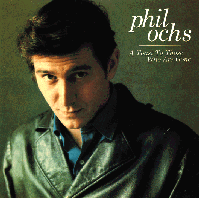
Ochs, a folk singer, is another key influence on Carroll. The Basketball Diaries is dedicated “In Memory of Phil Ochs”; other tributes to Ochs include “The Bells” in Forced Entries (p. 72) and “Heroes for Phil Ochs” in The Book of Nods (see Fear of Dreaming 210). Read more about Phil Ochs on Wikipedia >
Orlovsky appears in “Dylan and the KGB” (65-70) and “The Loft Party” (101-110) in Forced Entries. He is featured on Disconnected, along with Carroll and others (more here). Read more about Peter Orlovsky on Wikipedia >
Carroll describes a fascinating run-in with Smithson in “Robert Smithson Does Some Impressive Talking to an Idiot Who Just Trailed a Beam of Light” in Forced Entries (pp.41-43). Carroll also has a poem, “For Robert Smithson,” in The Book of Nods (see Fear of Dreaming 234). Read more about Robert Smithson on Wikipedia >
Carroll says of Southern in “The Loft Party” in Forced Entries: “He’s a funny guy. I like him, in spite of the fact that after working two full years of high school at getting my dick inside the family crest of this lovely, wonderfully precocious teenage actress I was going with . . . after spending inordinate (and I would not make money an issue if it were not inordinate) sums of money on her . . . money which had been previously allocated for mind alteration . . . After all this, who else but Terry Southern winds up performing the hymen maneuver on her when she goes up for the lead in the film version of his sicko-smut (I say this in a non-perjorative sense) epic, Candy. . . . We laugh about it now. We laugh about it tonight, in fact. He seems to laugh harder, however. And last” (103-4). Read more about Terry Southern on Wikipedia >

